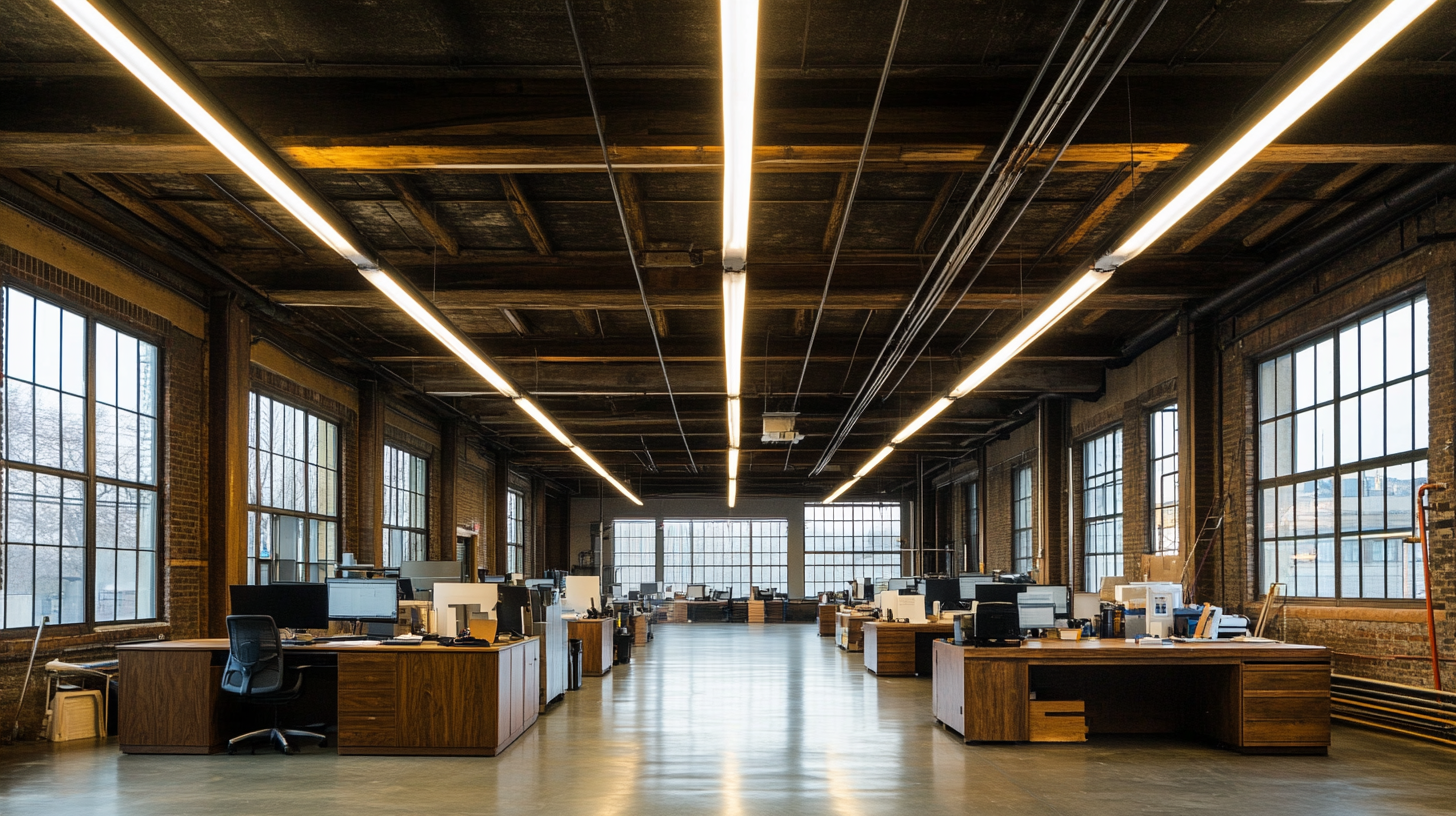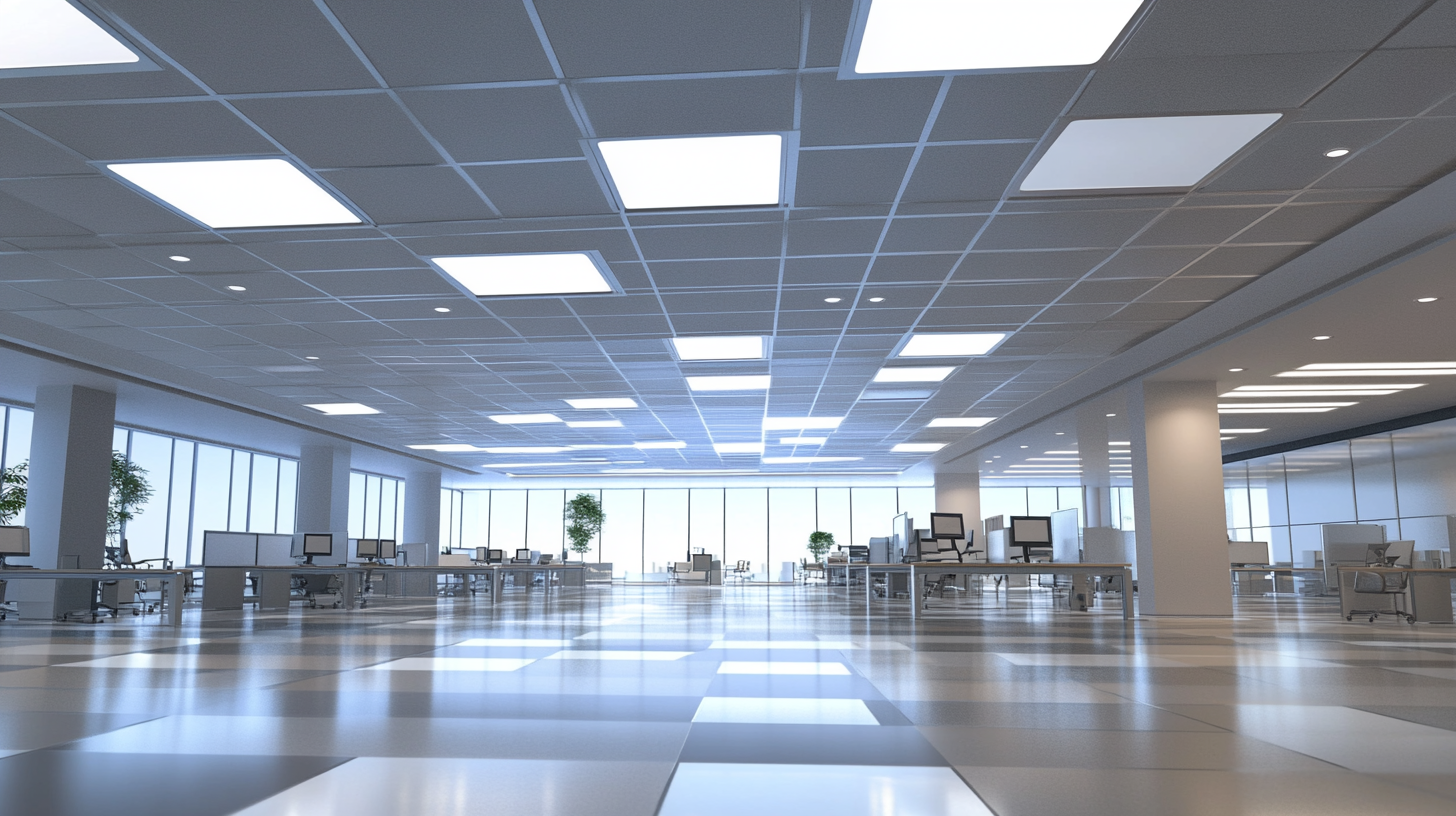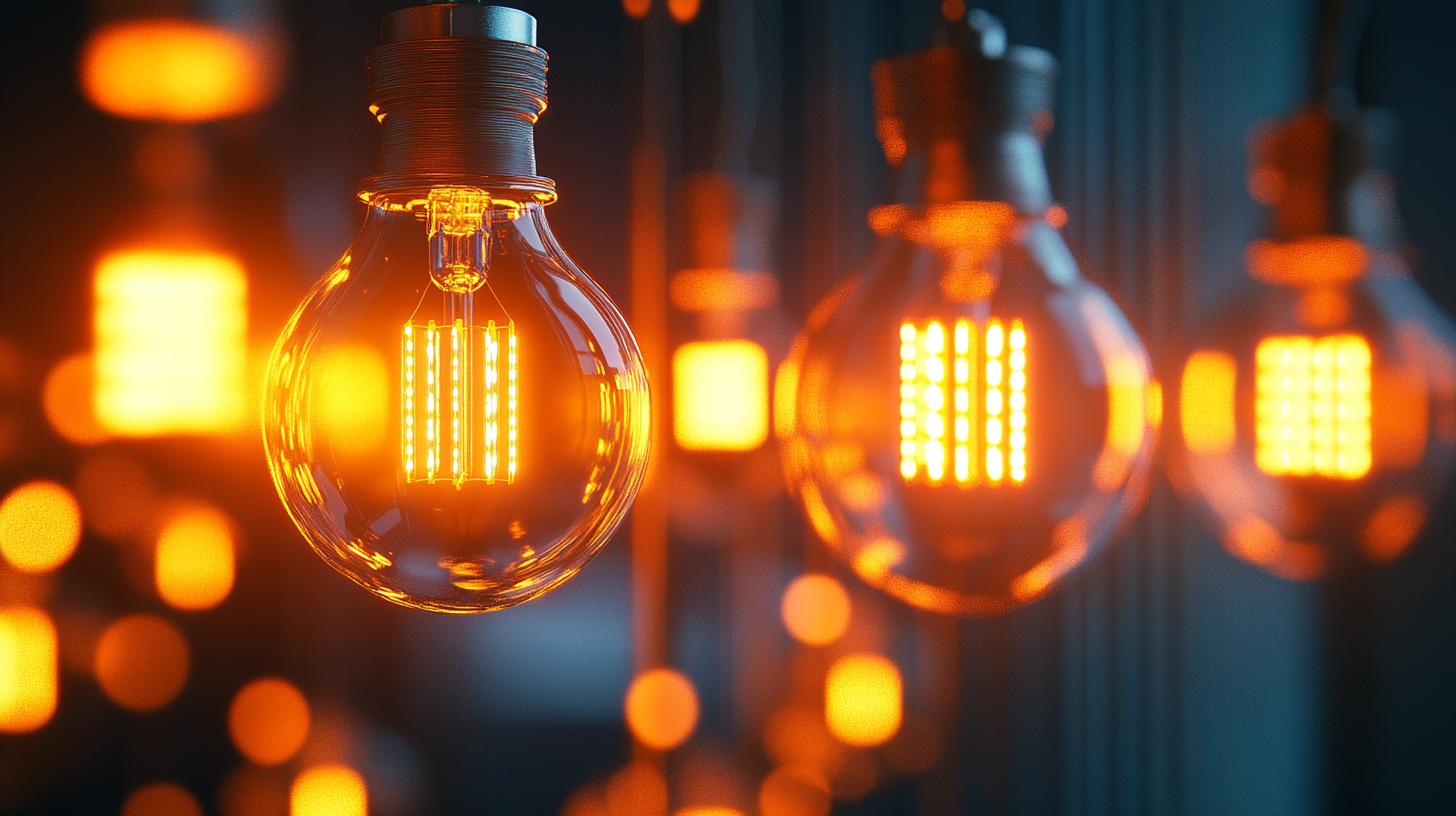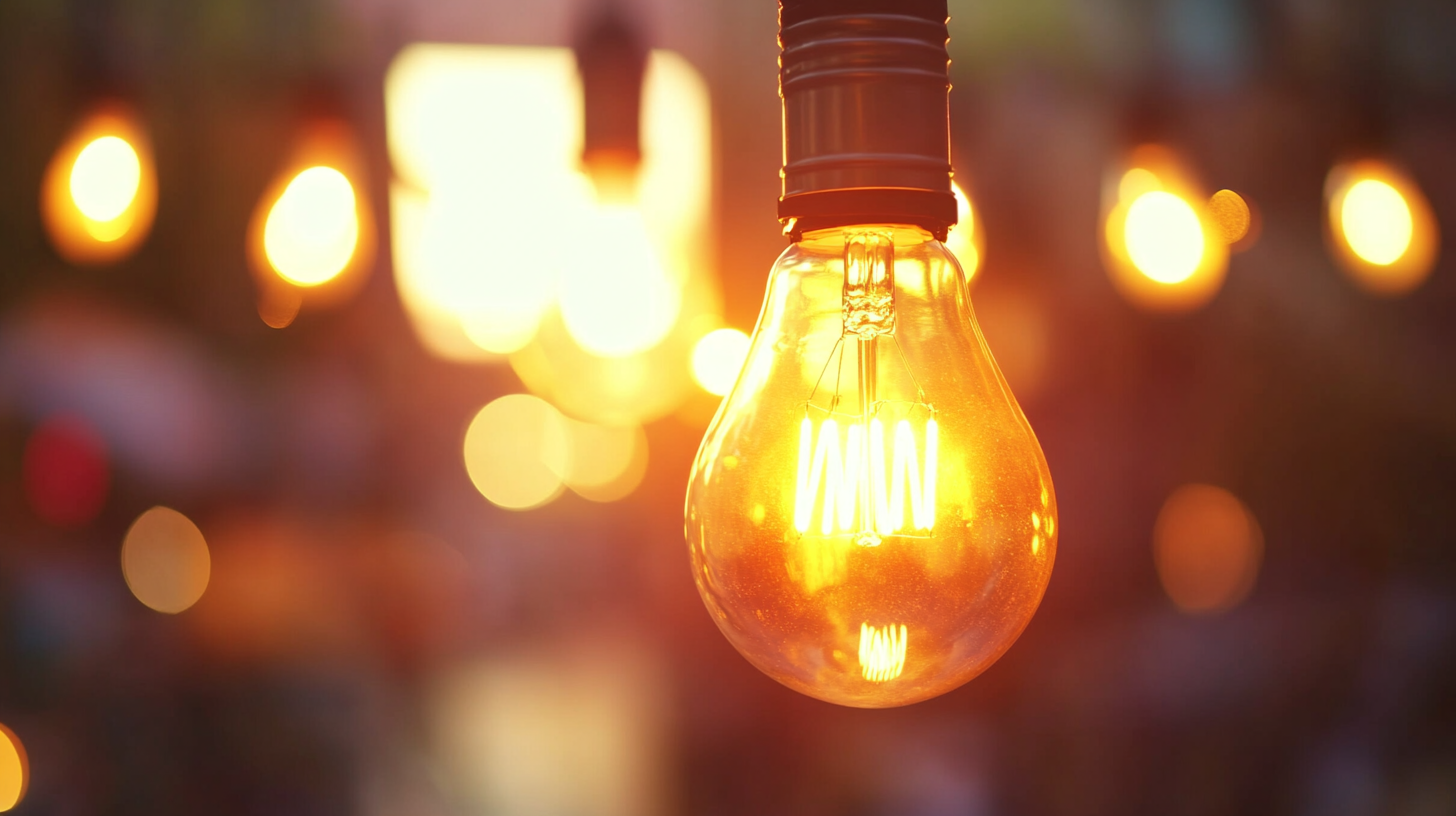
In today's fast-paced industrial environment, the significance of efficient workspace design cannot be overstated, particularly regarding the role of industrial lighting. Recent studies indicate that appropriate lighting conditions can increase worker productivity by up to 20%, while also reducing fatigue and eye strain. The American Society of Interior Designers (ASID) suggests that improved lighting can lead to greater job satisfaction and overall employee morale, which are vital factors in maintaining a competitive edge in the market. Furthermore, a report by the Energy Efficiency Improvement (EEI) found that energy-efficient industrial lighting solutions can lower energy costs by an astounding 30% to 50%, demonstrating not only their economic benefits but also their impact on sustainability.
The implications of industrial lighting extend beyond mere cost savings; they also play a crucial role in enhancing workplace safety. According to the U.S. Occupational Safety and Health Administration (OSHA), poor lighting is a contributing factor in nearly 30% of workplace accidents. Properly designed industrial lighting can improve visibility, minimize hazards, and foster a safer working environment. As industries strive to implement more sustainable practices, the shift towards energy-efficient lighting solutions emerges as a key component in transforming workspaces, ultimately leading to higher productivity levels and improved safety for all employees.

Energy-efficient lighting plays a pivotal role in industrial settings, significantly influencing both productivity and safety. As National Energy Conservation Day reminds us of the importance of saving energy, this becomes especially relevant in workplaces where lighting can impact employee performance and overall operational effectiveness. By implementing energy-efficient lighting solutions, industries can create bright, well-illuminated spaces that enhance workers’ focus and reduce fatigue, fostering a more productive environment. Moreover, energy-efficient lighting contributes to safety in the workplace. Proper illumination helps in reducing accidents and injuries by ensuring that all areas are well-lit, thereby enabling workers to perform their tasks with greater confidence. This is crucial in industrial settings where the dynamics can be fast-paced and safety risks prevalent. The shift towards energy-efficient options not only trims operational costs but also aligns with broader sustainability goals, showcasing a commitment to environmental stewardship. As industries worldwide transition to energy-efficient lighting, the benefits extend beyond mere savings. Such initiatives resonate with a global movement towards energy efficiency, often considered the “first fuel” in clean energy transitions. By harnessing advanced lighting technologies, industries can meet their energy needs more responsibly, contributing to a reduction in carbon emissions and supporting a healthier planet for future generations.

The impact of energy-efficient industrial lighting on employee productivity is more significant than many organizations realize. Numerous studies indicate that optimal lighting conditions can enhance productivity by as much as 20%. A 2021 report by the International Energy Agency states that well-designed lighting systems do not only reduce energy consumption but also create a more conducive working environment, ultimately leading to improved employee efficiency.
Improved lighting has a direct effect on workers' mood and alertness. According to a study published in the Harvard Business Review, employees working in environments with appropriate lighting reported 15% higher job satisfaction and less fatigue. Specifically, natural light and quality LED lighting have been shown to promote better concentration and reduce eye strain, allowing employees to perform tasks more effectively. This is particularly vital in industrial settings where safety and precision are paramount.
Additionally, energy-efficient lighting contributes to workplace safety. The National Institute for Occupational Safety and Health (NIOSH) reported that enhanced visibility in work areas reduces the likelihood of accidents and injuries by nearly 30%. Properly illuminated workspaces help employees identify hazards quickly, leading to a safer environment that promotes not only efficiency but also overall workplace well-being.
By investing in energy-efficient industrial lighting, companies are not only optimizing energy costs but also fostering a productive and safe working atmosphere for their employees, which is essential for long-term success.

In today's industrial settings, proper lighting is not merely a convenience; it is imperative for enhancing workplace safety. Adequate lighting solutions, especially on construction sites, play a crucial role in minimizing risks associated with injuries and fatalities. Temporary lighting, in particular, can significantly improve visibility and help workers navigate potentially hazardous environments with greater confidence. This aligns with recent discussions around providing sufficient illumination to ensure that all tasks can be performed safely.
Moreover, the mental health implications of workplace lighting cannot be overlooked. Research has shown that lighting conditions can directly influence mood, productivity, and overall well-being. Poorly lit environments can lead to fatigue and decreased morale, while well-lit spaces foster a sense of clarity and focus among workers. As organizations strive to comply with evolving safety regulations, including those set forth by OSHA, embracing innovative lighting solutions becomes a pivotal part of maintaining a healthy work environment.
Utilizing connected monitoring systems further enhances safety by allowing for real-time assessments of lighting adequacy, ensuring it meets the necessary standards. This technology also aids in immediate hazard identification and response, fundamentally shifting how workplace safety is approached. In 2025 and beyond, industries must prioritize the integration of energy-efficient, safety-oriented lighting solutions as a strategy to safeguard their workforce and uphold mental health standards.

When it comes to enhancing workplace productivity and safety, selecting the right energy-efficient lighting technologies is paramount for any facility. Modern advancements in lighting not only reduce energy consumption but also create a more conducive work environment. LED lighting, for instance, has gained significant traction due to its longevity and minimal heat emission, which helps maintain a comfortable temperature without excessive energy use. By providing bright, even illumination, LEDs can reduce eye strain and increase alertness among employees, leading to improved performance.
Another option worth considering is smart lighting systems that integrate sensors and automation. These systems adjust brightness based on the presence of individuals and the amount of natural light available, ensuring optimal lighting conditions at all times. By tailoring the illumination to specific tasks and areas, facilities can enhance safety as well. Properly lit spaces help prevent accidents and make it easier for employees to navigate their environments, especially in industrial settings where visibility is crucial.
Moreover, choosing lighting that aligns with your facility’s needs can result in significant cost savings in the long run. While the initial investment in energy-efficient technologies may seem substantial, the reduction in energy bills can quickly offset these costs. When selecting lighting solutions, it’s essential to assess the unique requirements of different workspaces, ensuring that the right type of light is in place to promote productivity and safety. Ultimately, the thoughtful implementation of energy-efficient lighting can transform a workspace into a more efficient and safer environment for all employees.
The implementation of energy-efficient lighting in industrial settings has garnered significant attention for its potential benefits in productivity and safety. Recent case studies illustrate how industries can achieve remarkable improvements through strategic lighting solutions. For instance, a report by the U.S. Department of Energy highlights that upgrading to LED lighting can increase worker productivity by up to 20%, mainly due to improved visibility and reduced eye strain. In addition, well-lit environments are known to decrease workplace accidents by enhancing visibility around machinery and workstations.
In emerging economies, the integration of energy-efficient lighting can present unique challenges. Although these technologies generally aim to reduce energy costs, evidence suggests that in energy-intensive sectors, lowering costs can inadvertently lead to increased energy consumption. This phenomenon underscores the importance of holistic approaches that not only adopt energy-efficient systems but also promote sustainable practices. A study conducted in over 100 industrial facilities across China revealed that the successful implementation of energy-efficient lighting correlated with a 15% reduction in operating costs, yet some facilities reported a rise in energy usage due to increased operational hours under brighter, more inviting conditions.
One of the compelling success stories comes from the establishment of green industrial parks, where energy-efficient lighting has been a cornerstone of their design. These parks embody initiatives such as the combination of low-carbon strategies and smart operations, aimed at creating sustainable environments. Case examples, like those initiated in Hangzhou, demonstrate how blending innovative lighting solutions with eco-friendly practices can lead to a significant decline in overall energy consumption while fostering a safer and more productive workplace.
Let us help you get started with our superior LED lighting products.
Get all the latest news from BrightLED.
Copyright © Bright LED. All rights reserved.
STAY CONNECTED

